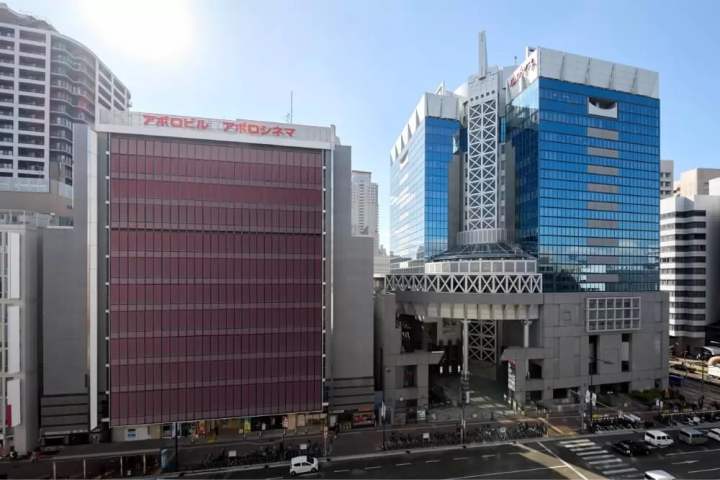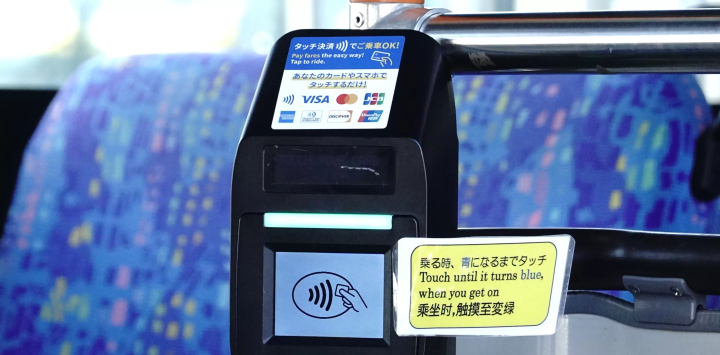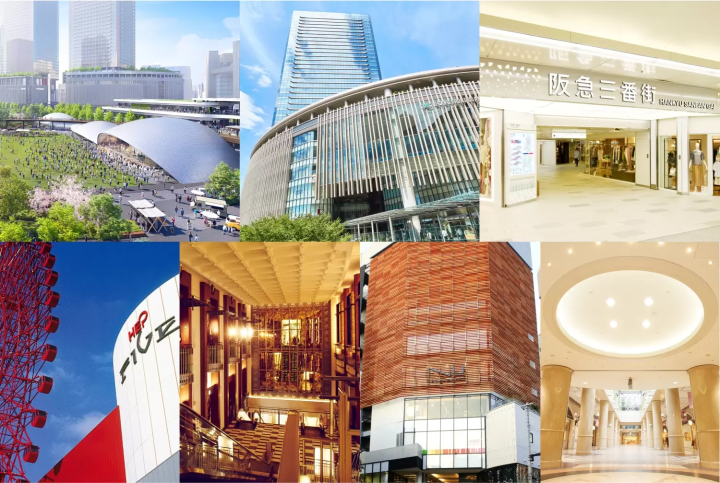【Tomioka City, Gunma Prefecture】The way you see the world heritage would change here. ~A free little-known spot where you can stop by for 30 minutes before going to a world heritage site~

The World Heritage Center is a comprehensive guidance and exhibition facility for the Tomioka Silk Mill and Related Sites. There are exhibitions on the first and second floors, and a theater room where you can watch videos on the first floor. The first floor is a floor that conveys the overall picture of the World Heritage Site. On the second floor, there are four heritage exhibits for more detailed information and an experiential digital exhibition facility called the Mayudama (cocoon shaped) T...
Immediately after getting off Joshin Electric Railway's Joshu Tomioka Station, there is a brick building on the right in front of you. This is a facility in Gunma Prefecture that opened in 2020. The best part is that admission is free . Located on the way from the station to the Tomioka Silk Mill, it can be said to be a hidden gem with great value.

There are shops and cafés within the plaza, but the brick building on the east side closest to the station is Gunma Prefectural World Heritage Center Sekaito. Sekaito's concept is to "convey the value of World Heritage Sites in an easy-to-understand manner." It makes sense that it will be easier to understand the world heritage sites if you are exposed to their global value before visiting each world heritage site.

The World Heritage Sites referred to here refer to the Tomioka Silk Mill and Related Sites, specifically the following four heritage sites. These are Tomioka Silk Mill (Tomioka City), Tajima Yahei Sericulture Farm (Isesaki City), Takayama-sha Sericulture School (Fujioka City), and Arafune Cold Storage (Shimonita Town).
About the center building
The brick warehouse where the cocoons were kept was renovated and turned into an exhibition facility. The Tomioka Silk Mill was established in 1872, and this warehouse is said to have been built around 1901. Some of the bricks are new to create the passageway, but the bricks are also from that time. It's basically being used as it is.

However, in order to comply with current building standards, the building is said to have been earthquake-proofed and reinforced with a carbon fiber material with a steel frame and thread motif. The building was designed by Kengo Kuma Architects and Urban Design Office, and is characterized by a design that has a sense of unity with the surrounding plaza and Tomioka City Hall.

The World Heritage Center is a comprehensive guidance and exhibition facility for the Tomioka Silk Mill and Related Sites. There are exhibitions on the first and second floors, and a theater room where you can watch videos on the first floor. The first floor is a floor that conveys the overall picture of the World Heritage Site. On the second floor, there are four heritage exhibits for more detailed information and an experiential digital exhibition facility called the Mayudama (cocoon-shaped) Table .
Best Spot 1 “Theater Room”

The "Theater Room'' lets you understand the value of World Heritage Sites in just 15 minutes. During opening hours, the same content is shown at 0:00, 20, and 40 minutes every hour, so you can watch it at a time that is convenient for you.
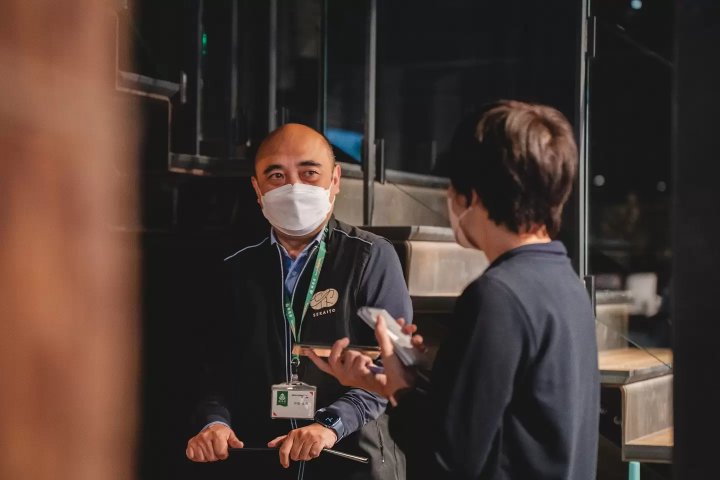
"After viewing the overall image on panels, etc., you can watch the video in the theater room in the back. Just by watching this 15-minute World Heritage guidance video, you can already experience the value of World Heritage sites. No matter how little time you have, you can watch the video. But if you stop by for 15 minutes, you'll be fine!'' says Mr. Nakajima, a researcher at the center. We hope you enjoy this wonderful experience that will change your perspective on World Heritage Sites in just 15 minutes.
Best Spot 2 “Hana Mayu and UNESCO World Heritage Listing Certificate”

The first thing that catches your eye at the entrance on the first floor of the center is Hanamayu, a large flower made from cocoons. The luxurious and beautiful shine of the cocoons is impressive. Next, on the other side of Hana Mayu, a fine document written in English is displayed in a case. This is a certificate of inscription on the UNESCO World Heritage List.

The original is own by the Ministry of Foreign Affairs, so this is a replica, but there are only 6 replicas in existence. This one is own by the Gunma Prefecture. One is own by the Agency for Cultural Affairs. The remaining four are said to be in the local governments of Tomioka City, Isesaki City, Fujioka City, and Shimonita Town. Nearby, there are also exhibits that are exactly the same as the nomination form submitted to UNESCO. Eiichi Shibusawa and Paul Brunat are also seen in the picture.
Best Spot 3 “Mayudama Table”

An experiential digital exhibition facility called "Mayudama Table" is located in the middle of the second floor. When a cocoon-shaped board is placed on an illustration or person on the table, it reacts and produces sounds and explanations. It's also interesting to see arrows of light fly towards places where there are relationships and connections. It's also very popular with elementary school students. We would also like you to look for a cat that is closely related to sericulture.
Best Spot 4: “Treasure Map of Gunma, the Land of Silk”
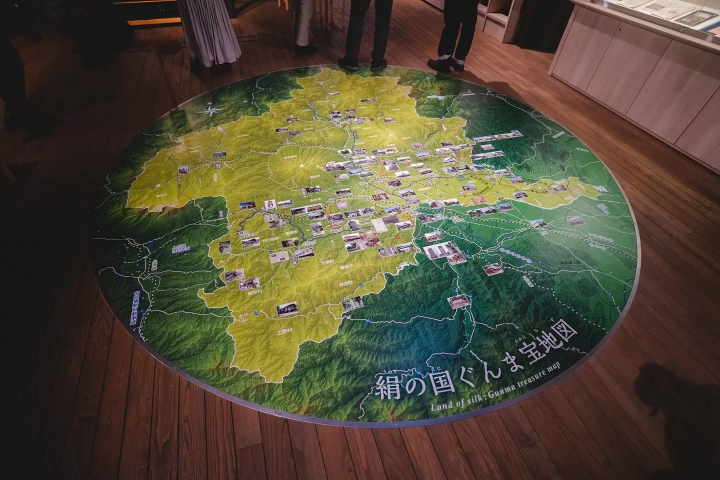
This is also the second floor. One of the reasons Tomioka Silk Mill was established in Gunma Prefecture is because it was a sericulture area. It is interesting to see that so many historical sites, buildings, monuments, etc. related to sericulture, silk reeling, and textiles still remain today, which can be seen on the map of Gunma Prefecture.

Tomioka Silk Mill ,sericulture industry and related sites as one set. The value as a World heritage site.

Mr. Nakajima, a researcher at the Prefectural World Heritage Center, talks about this. "Why did it become a World Heritage Site? If we understand its value, we will see things differently, especially when it comes to industrial heritage sites." As a world heritage site, he also emphasizes its global value and its connections. "Technological innovation" and "technological exchange" with the world made possible the mass production of raw silk, which at the time had limited production. Tomioka Silk, represents the silk industry while Tajima Yahei Sericulture Farm, Takayama-sha Sericulture School and Arafune Cold Storage represent sericulture industry. It is said that the value of World Heritage Sites can be seen even more deeply by looking at them as a whole.

Currently, the majority of visitors come from Japan, but foreign visitors are gradually appearing. Although not all of the videos and exhibition panels are written in English. Explanatory pamphlets for the entire exhibition are also available in five languages (Japanese, English, traditional and simplified Chinese, and Korean). There are also pamphlets available for download in Spanish, Portuguese, and French.

“We operate our business with the desire to satisfy and delight our visitors, and to help them understand and experience World Heritage Tomioka Silk Mill. I would be happy if someone told me that they would like to visit the World Heritage Sites,” says Mr. Nakajima.

In Japan during the Meiji period (1868-1912), silk was an industry that was exported to the world. Even today, buildings and heritage sites related to this area still exist and can be seen. It has become a world heritage site recognized around the world and located in Gunma Prefecture.
Our predecessors overcame difficulties, gathered their wisdom, and made improvements and practices to solidify the industry. Gunma Prefectural World Heritage Center "Sekaito'' conveys its value in an easy-to-understand manner, and it can be said that it provides important light that connects to the present day.
Gunma Prefectural World Heritage Center Sekaito Basic Information
Address : 1450-1 Tomioka, Tomioka City, Gunma Prefecture
TEL : 0274-67-7821
FAX : 0274-67-7822
Opening hours : 9:00-17:00
Closed days : March to November: Last Wednesday of each month, December to February: Every Wednesday (*The next day if it is a public holiday) December 29th to December 31st Other temporary closures may also occur (*Please see the latest information on the website) )
Access : Joshinetsu Expressway: Approximately 10 minutes by car from Tomioka IC, 1 minute walk from Joshin Electric Railway Joshu Tomioka Station, 10 minutes walk from Tomioka Silk Mill
The Tomioka City Tourism Association utilizes the tourism resources of Tomioka City, including the Tomioka Silk Mill and Mt. Myogi, in order to increase the number of visitors while contributing to the development of the local economy.
The contents on this page may partially contain automatic translation.


![[Tomioka City, Gunma Prefecture] Complete guide to the World Heritage Tomioka Silk Mill” - Access, highlights, etc.](https://resources.matcha-jp.com/resize/200x2000/2023/11/29-154334.webp)
























